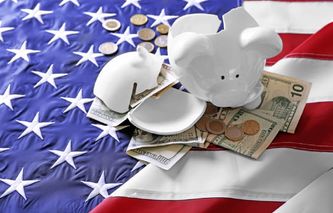In 1994, California's Assembly Office of Research discovered a bizarre trend of almost two-thirds of stores across five cities charging more for cleaning women’s shirts compared to men’s, or what would be now known as the pink tax. A year later, California became the first state to ban pricing discrimination on the basis of gender. However, when we look at pink tax statistics three decades later, we can see that pink tax is still a reality. Read on to learn more.
Key Pink Tax Statistics for 2024
On average, women pay 7% more than men for similar products.
42% of the time women’s products had a higher price tag.
Personal care products for women cost 13% more on average.
In the kids section, girls’ products cost 7% more than boys’.
Women’s home health care products cost 8% more on average.
Imports of women's goods are taxed 0.7% more on average.
On average, US import tariffs on women’s apparel are three percentage points higher.
Prices of products marketed to women are growing twice as fast.
Women drivers are twice as likely to be charged more per year for auto insurance.
Only 23 states don’t have a period product sales tax.
Pink Tax Stats: Averages in the US
On average, women pay 7% more than men for similar products.
The study found the so-called women's tax or a higher price for similar, but gendered products, in five industries, over a sample of 794 similar, but gendered products in 35 product categories in 24 NYC stores. The percentage of 7% was arrived at when looking at the average of the products.
(DCA)
Women’s products were found to be more expensive 42% of the time.
In the famous pink tax study, From Cradle to Cane: The Cost of Being a Female Consumer, it was found that men’s and women’s products had roughly equal prices only 40% of the time. In 42% of cases, women’s products were more expensive, while the percentage was 18% for men’s products.
(DCA)
Personal care products for women cost 13% more on average.
One of the most jarring pink tax facts is that women’s personal care products had price tags that were on average 13% higher. Hair care products were the worst offenders, costing almost 48% more, or $2.71 more for the typical shampoo and conditioner set.
(DCA)
In the kids’ section, girls’ products cost 7% more than boys’.
For toys, clothing, and accessories, the average difference or pink cost was $14.92, or a total of 7%. The highest pink tax was seen in the prices of girls’ shirts, costing 13% more or $1.87 per shirt. However, girls’ clothing in general was only 4% more expensive. Toys marketed towards girls in general were 11% more expensive, while backpacks had the smallest price difference of only 0.8%.
(DCA)
The average price difference between women’s and men’s home health care products was found to be 8%.
Pink tax statistics show a 12% price difference in canes targeted to men and women, a 4% difference in compression socks, a 2% difference in adult diapers, a 21% difference in personal urinals, and a 15% in braces and supports.
(DCA)
On average, imports of women's goods are taxed 0.7% more than imports of men’s goods.
One of the lesser-known facts about the pink tax is that it’s global and it starts with import tariffs, explaining a part of the pink tax. On a sample of almost 200,000 pairs of import tariff rates on men’s and women’s products from 167 countries, researchers found imports of goods labeled for women had an average 0.7% higher tariffs.
(ResearchGate)
On average, US import tariffs on apparel for women are three percentage points higher.
With most apparel in the US coming from import, the difference in tariffs makes women’s products more expensive for retailers from the get-go. While in some categories, men’s clothing has higher tariffs (like swimming suits), the overall difference is more detrimental to women. Pink tax data show men’s apparel’s import tariffs come out at 11.9% on average, while women's apparel comes with a 15.1% average tax.
(Mosbacher Institute)
Pink tax examples were found in auto insurance, too, with women told to pay $100 or more per year.
In an analysis of insurance rates offered to female and male drivers with perfect driving records, aged 20, 40, and 60, most large car insurance companies treated women as higher-risk drivers, while in a number of cases they treated men as higher-risk. The study by the Consumer Federation of America found women aged 40 and 60 were charged more for basic coverage nearly twice as frequently as men. In the case of 20-year-old drivers, male drivers were charged more in most cases.
(CFA)
Prices of products marketed to women are growing twice as fast.
One of the most disturbing pink tax trends concerns the rate at which retailers raise the prices of products typically intended for women and men. An analysis of official UK data from retailers showed that for products for women, inflation is 4.15% year over year, compared to 2.2% for women. One of the most shocking examples of the pink tax concerns formal shoes: the prices for men’s shoes grew by 14% in 2021, while the prices for women’s shoes grew by 75%.
(New Statesman, Fortune)
Bonus Pink Tax Facts: Things That Make It Worse
Women overall earn 83 cents for every dollar men make.
The pay gap exists even within the same occupations, according to the most recent US Census data, and it’s even worse for women of color. The average American woman makes 84.3% of what the average American man makes. Moreover, women are more likely to hold student debt, and more likely to become single parents, making the “women’s tax” even more infuriating.
(US Census)
Period poverty in the US increased by 35% between 2018 and 2021.
While the pink tax and the tampon tax are different, they still predominantly impact women’s personal finances, especially as women are less likely to have emergency savings in general. A survey conducted in 2018 and again in 2021 showed that people who menstruate suffered increasingly more period poverty after the pandemic.
(Alliance for Period Supplies)
Only 23 states don’t have a period product sales tax.
Just like sales tax varies by state, products that are exempt from sales tax vary, too. Food is considered a necessity and is exempt from the sales tax in 33 states, and taxed at lower rates in five states. At the same time, 23 states currently consider period products a necessity exempt from taxation.
(Alliance for Period Supplies)
Pink Tax Statistics: The Takeaway
While the pink tax isn’t a tax but a form of gender-based pricing discrimination that was found in 42% of examined cases in official research, there is an issue of actual import taxes that are gendered and especially discriminatory when it comes to women’s apparel, even when the only difference in the product is its target market.
Another burning issue in times of rising inflation around the world is the case in the UK where the prices of women’s products are growing twice as fast as the prices of men’s products. We haven’t found similar research on inflation and gendered products in the US, but other pink tax stats we found show it is definitely something to beware of when shopping.
Pink Tax FAQ
What is pink tax?
Is pink tax real?
Why does pink tax exist?
Sources:


.jpg)


